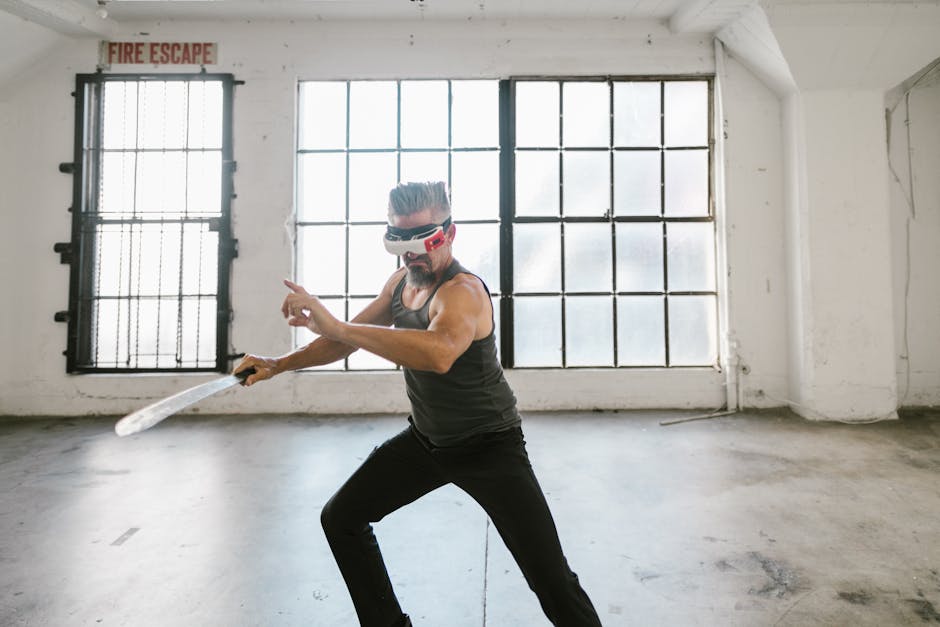The Role of Virtual Reality in Modern Rehabilitation
In recent years, virtual reality (VR) has transcended its gaming origins to become a powerful tool in various fields, including healthcare. One of its most promising applications is in the realm of rehabilitation. But what exactly is the role of VR in modern rehabilitation, and how is it making a difference? Let’s dive in! 🌟
Table of Contents
1. Introduction to Virtual Reality in Rehabilitation
2. How Virtual Reality Works in Rehab 🏥
3. Benefits of Using VR in Rehabilitation 🌈
4. Challenges and Considerations 🤔
5. The Future of VR in Rehabilitation 🚀
6. Conclusion
7. FAQs
Introduction to Virtual Reality in Rehabilitation
Virtual Reality is no longer just about immersive games or cinematic experiences. It’s a groundbreaking technology reshaping how we think about rehabilitation. By providing a controlled, engaging environment, VR can simulate real-life scenarios that help patients improve their motor skills and cognitive functions. Whether it’s recovering from a stroke or managing chronic pain, VR offers a new dimension to traditional rehab methods.
How Virtual Reality Works in Rehab 🏥
VR in rehabilitation works by immersing patients in a 3D environment where they can interact with virtual objects or scenarios. These environments are tailored to the specific needs of the patient, allowing for personalized therapy sessions. For example, a patient recovering from a stroke might engage in tasks that mimic daily activities, helping them regain motor function and coordination.
Benefits of Using VR in Rehabilitation 🌈
There are numerous benefits to using VR in rehabilitation:
1. Enhanced Engagement: VR makes therapy sessions more engaging and enjoyable for patients, which can significantly improve adherence to rehabilitation programs.
2. Customized Therapy: Each VR session can be customized to meet the individual needs of the patient, providing a more targeted and effective approach.
3. Safe Environment: VR provides a safe environment to practice potentially risky movements without the fear of injury.
4. Real-Time Feedback: Patients receive instant feedback on their performance, allowing for quick adjustments and improvements.
Challenges and Considerations 🤔
While VR offers exciting possibilities, it’s essential to be aware of its challenges:
1. Cost: Implementing VR technology can be expensive, which may limit accessibility for some facilities or patients.
2. Technical Limitations: The technology is still evolving, and some VR systems might not accommodate all types of rehabilitation needs.
3. User Adaptability: Not all patients may feel comfortable using VR technology, especially those who are not tech-savvy.
The Future of VR in Rehabilitation 🚀
The future of VR in rehabilitation looks promising. As technology advances, we can expect more sophisticated VR systems that offer even more realistic and effective therapeutic experiences. With increased accessibility and reduced costs, VR could become a standard tool in rehabilitation centers worldwide.
Conclusion
Virtual Reality is redefining the landscape of rehabilitation by offering innovative, effective, and personalized therapy options. While there are challenges to overcome, the benefits of VR in helping patients recover and improve their quality of life are undeniable. As we continue to explore and expand its capabilities, VR is poised to become an indispensable component of modern rehabilitation.
FAQs
1. Can virtual reality be used for all types of rehabilitation?
While VR can be beneficial for many rehabilitation scenarios, it may not be suitable for all types of therapy. It’s essential to consult with healthcare professionals to determine if VR is appropriate for specific conditions.
2. Is virtual reality rehabilitation safe?
Yes, VR rehabilitation is designed to be safe. It provides a controlled environment where patients can perform exercises without the risk of physical injury.
3. How accessible is VR technology for rehabilitation?
Although the costs can be high, many rehabilitation centers are increasingly adopting VR technology. As the technology becomes more widespread, it is expected to become more accessible and affordable.
4. What conditions can benefit most from VR rehabilitation?
VR can be particularly beneficial for conditions involving motor skill recovery, such as stroke rehabilitation, as well as for managing chronic pain and improving mental health.
5. Does VR require special training for therapists?
Yes, therapists typically undergo training to effectively use VR systems in rehabilitation, ensuring they can tailor sessions to meet patients’ specific needs.

